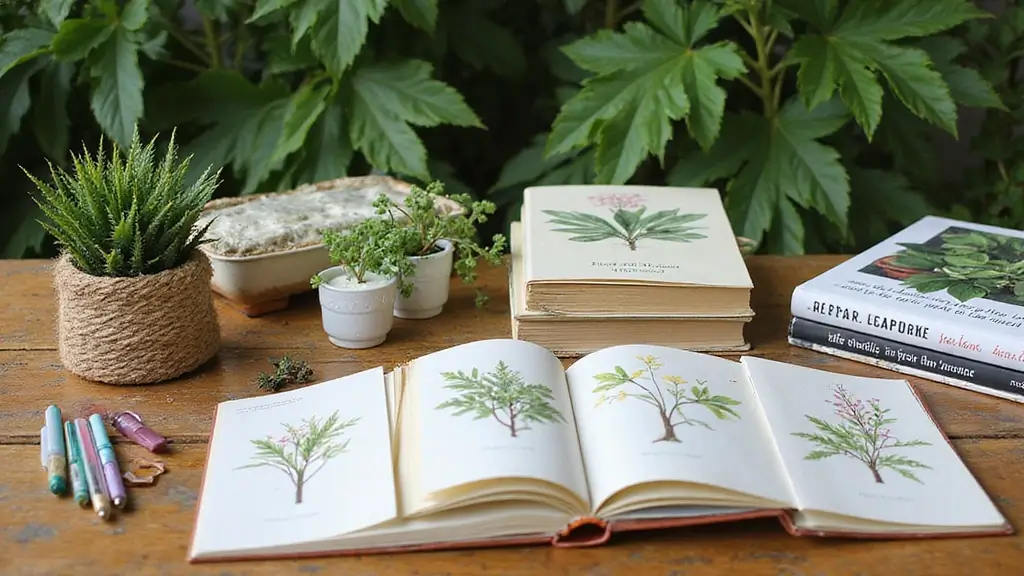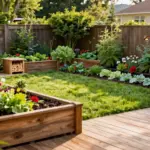For all the urban gardening enthusiasts out there, keeping track of your leafy friends can be a delightful experience.
A plant journal is not just a notebook; it’s a journey through your indoor jungle, documenting each plant’s story, growth, and care. Whether you’re a seasoned plant parent or just starting out, these journaling ideas will help you connect with your plants on a deeper level. From tracking growth patterns to jotting down care tips, this listicle is packed with creative prompts and templates that will inspire you to cultivate more than just your garden. Let’s dig in and discover how to turn every planting moment into a meaningful entry in your plant journal!
1. Weekly Plant Care Tracker
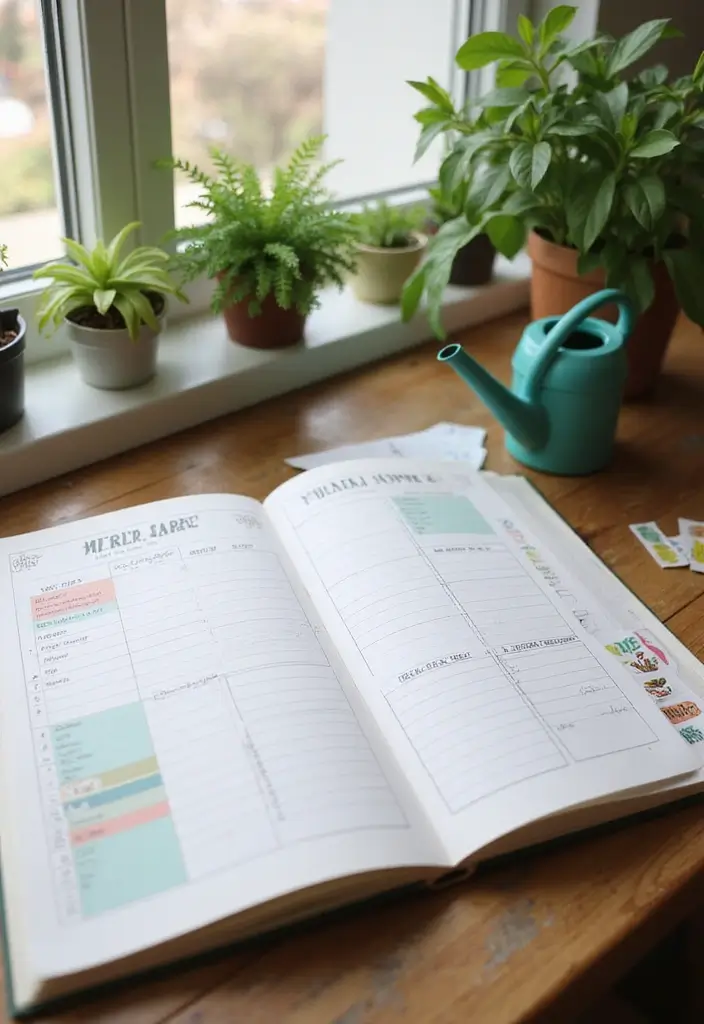
Establishing a routine is crucial for plant health, and a weekly plant care tracker is a fantastic way to keep everything organized.
You can create a simple table in your journal where you note down each plant’s watering schedule, fertilizing needs, and any pest inspections. This will help you ensure that no plant gets neglected. To make it more interactive, consider using colored stickers to represent when you’ve completed each task!
– Use different colors for different plant types.
– Create a checklist format for easy tracking.
– Note down any changes in your plants’ health or appearance.
Having this visual representation will not only keep you on top of your plant care but will also allow you to spot patterns and trends over time. It can turn into a treasure trove of insights!
2. Growth Progress Logs
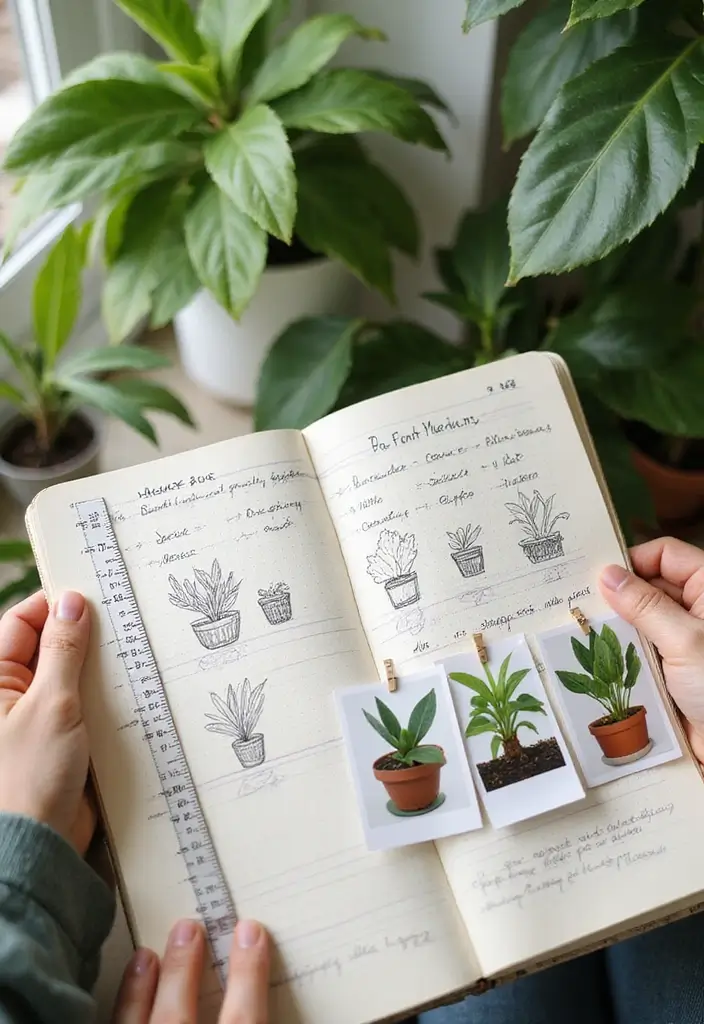
Watching your plants grow is like witnessing a miracle, and logging their growth progress can be incredibly rewarding.
Take photos or make notes every couple of weeks to capture how much your plants have changed. You could make a dedicated section for each plant where you write down height measurements, leaf counts, or even new stem growth. Not only will this document their beautiful journey, but it can also help you learn what conditions promote their best growth.
– Use dates to mark each entry for easy comparison.
– Include drawings or sketches to illustrate growth stages.
– Don’t forget to describe their surroundings and care adjustments.
This progress log will become a cherished section of your journal, serving as a reminder of your hard work and dedication.
3. Seasonal Reflection Pages

As the seasons change, so do the needs of your plants. Creating seasonal reflection pages in your journal is a way to document these transitions and adjust your care routines accordingly.
Each season, take time to reflect on how your houseplants have fared and what changes to make for the next season. Consider jotting down notes on lighting changes, humidity levels, and watering frequency so you can adapt as needed.
– Include photos of plants in different seasons.
– Note any seasonal challenges or achievements.
– Reflect on which plants thrived or struggled and why.
This practice not only improves your plant care skills but also encourages mindfulness about your urban gardening environment as it evolves throughout the year.
4. Plant Wish List

Every plant lover has that dream list of plants they want to bring home. Why not compile a plant wish list in your journal?
You can categorize plants by type, care requirements, or even the spaces in your home where they’d flourish best. Include images, sketches, or even links to where you found these beauties. This way, you can keep track of your plant goals and have a handy reference when visiting nurseries or plant fairs.
– Categorize plants by light requirements.
– Add care tips next to each wish-listed plant.
– Use fun stickers to mark your top favorites.
This wish list will not only motivate you but also make shopping for plants a more organized and exciting experience.
Every plant lover’s heart blooms with the thought of a dream garden. Keep your plant wish list handy, and let your ambitions guide your next nursery adventure!
5. Plant Personality Profiles
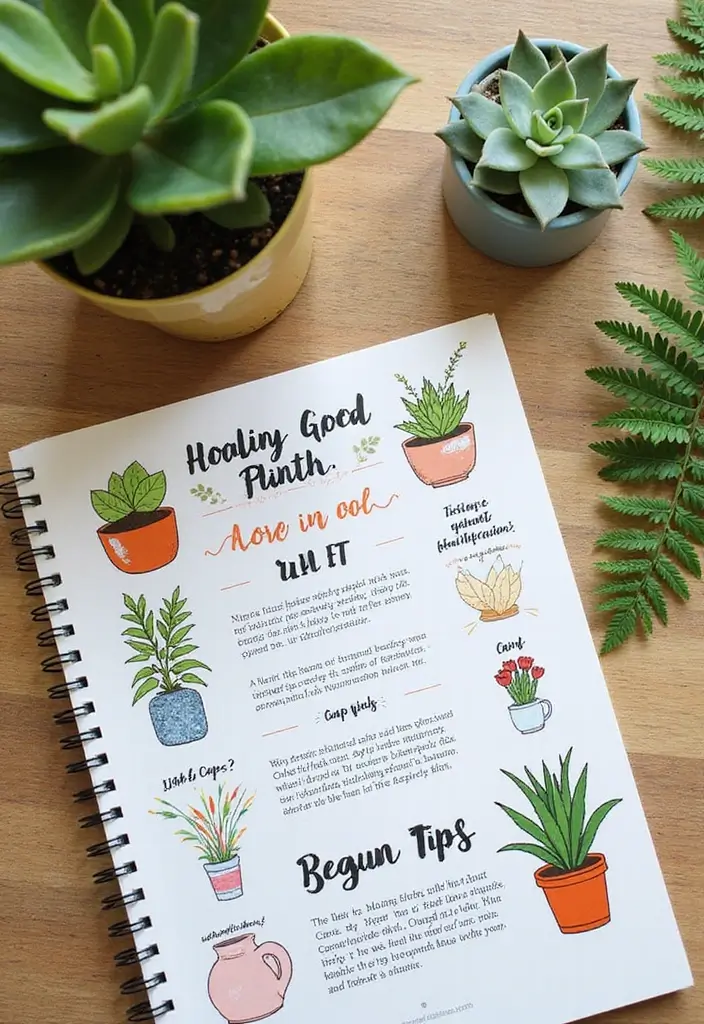
Every plant has its own unique quirks and characteristics. Why not dedicate a section of your journal to creating plant personality profiles?
For each plant, write down their story, including where you got them, their care preferences, and any funny anecdotes. This can be a fun way to personify your plants and strengthen your bond with them. It’s also a great way to remember their needs more easily!
– Include favorite spots in your home for each plant.
– Jot down any unique behaviors, like leaning toward light.
– Share your expectations versus reality for their growth.
This engaging ritual will turn your journal into a personal plant encyclopedia that’s full of heart!
6. Plant Care Challenges
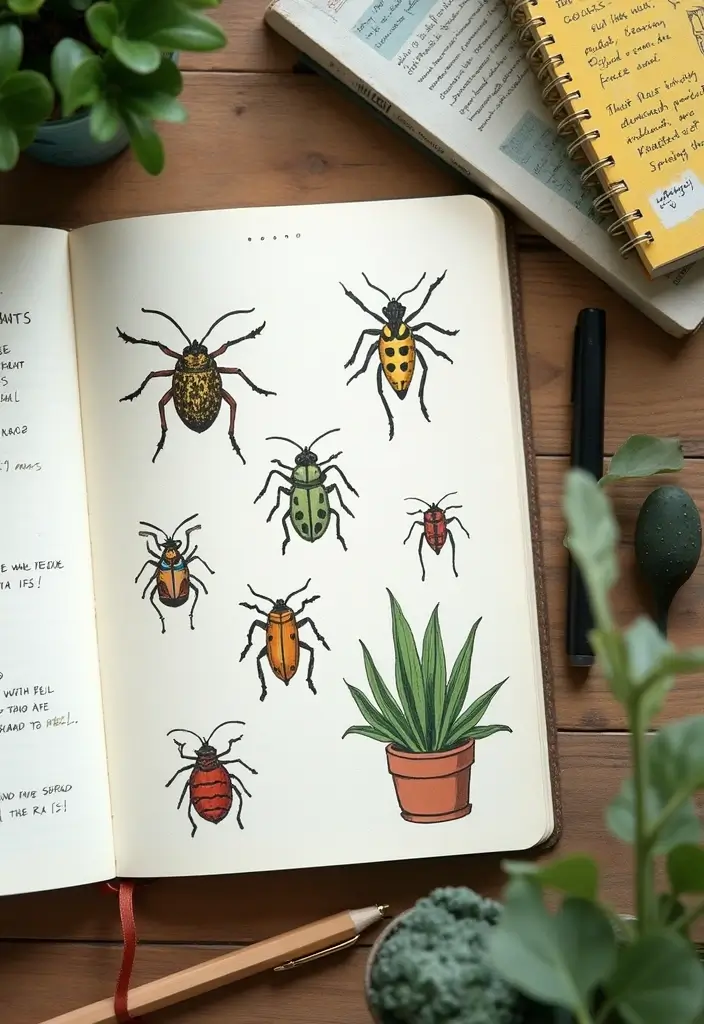
Every plant parent faces challenges, and documenting these can be a valuable part of your plant journey.
Use your journal to track any issues you encounter—like pest infestations or overwatering. Write down what strategies you used to solve them and how successful you were. This reflection can be helpful for future care, and it also serves as a reminder that challenges are part of the growth process.
– Create a troubleshooting guide for common plant issues.
– Note the outcome of different strategies you tried.
– Celebrate the victories, no matter how small!
This practice will help you become a more resilient gardener while also fostering a positive mindset towards problem-solving.
7. Indoor Gardening Ideas
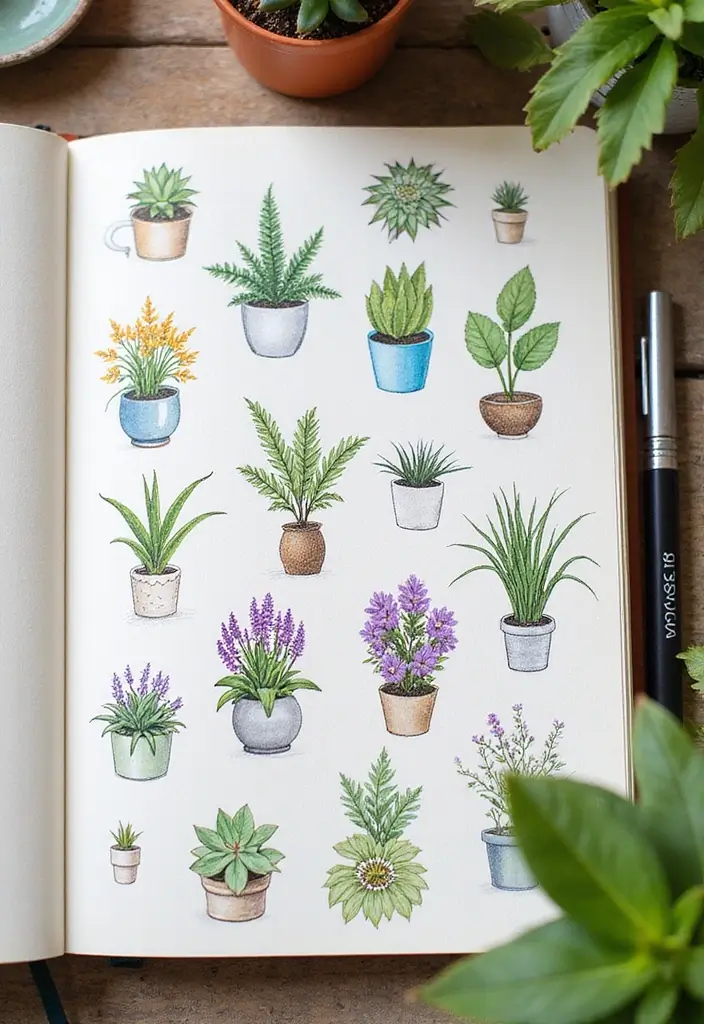
Urban gardening comes with its unique challenges and opportunities. Use your plant journal to brainstorm and record indoor gardening ideas that suit your space!
You could sketch layouts for plant arrangements, jot down creative planting ideas like vertical gardens, or even experiment with hydroponics. Include ideas for how to maximize light and humidity in your home to create an ideal environment for your plants.
– Explore unconventional planting techniques.
– Network with local gardening groups for tips.
– Share your ideas with fellow urban gardeners!
This section can be a catalyst for experimenting and growing your indoor garden to its fullest potential!
8. Nature Journaling Techniques
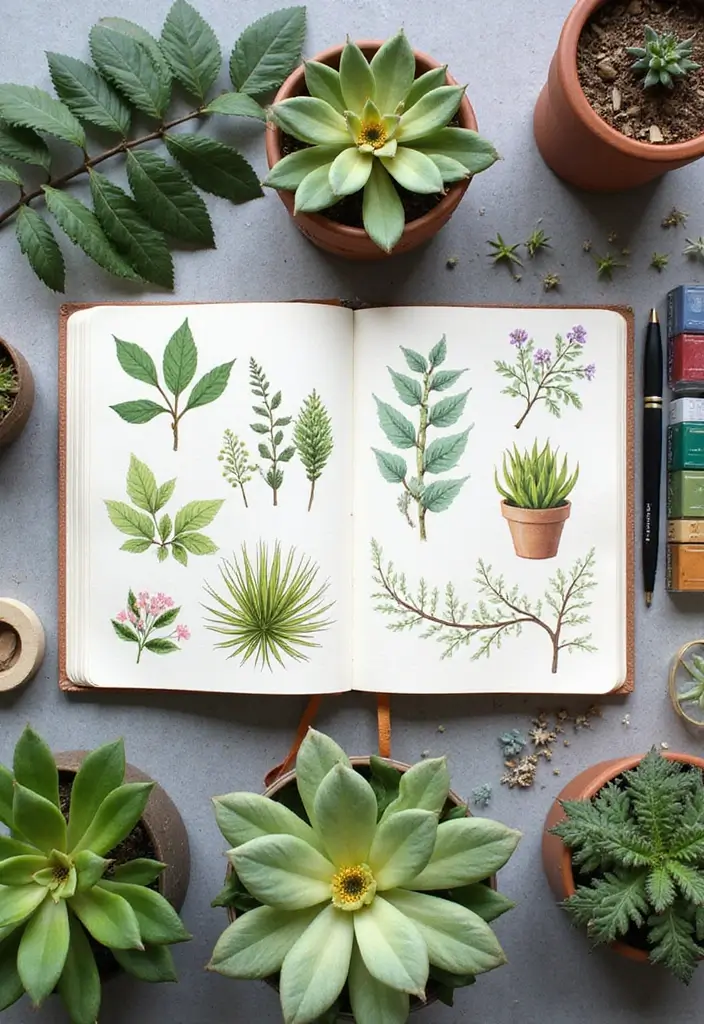
Integrating nature journaling techniques into your plant journal can deepen your connection with the natural world.
Consider drawing or painting your plants instead of just writing about them. You could also include observations from your surroundings, such as changes in seasons or wildlife interactions. This enhances your appreciation for the plants and can inspire new ideas for their care.
– Use different mediums like watercolor or colored pencils.
– Document seasonal changes in your environment.
– Combine nature journaling with your plant profiles.
This creative twist will make your journal an artistic showcase of your urban gardening journey.
9. DIY Plant Care Recipes
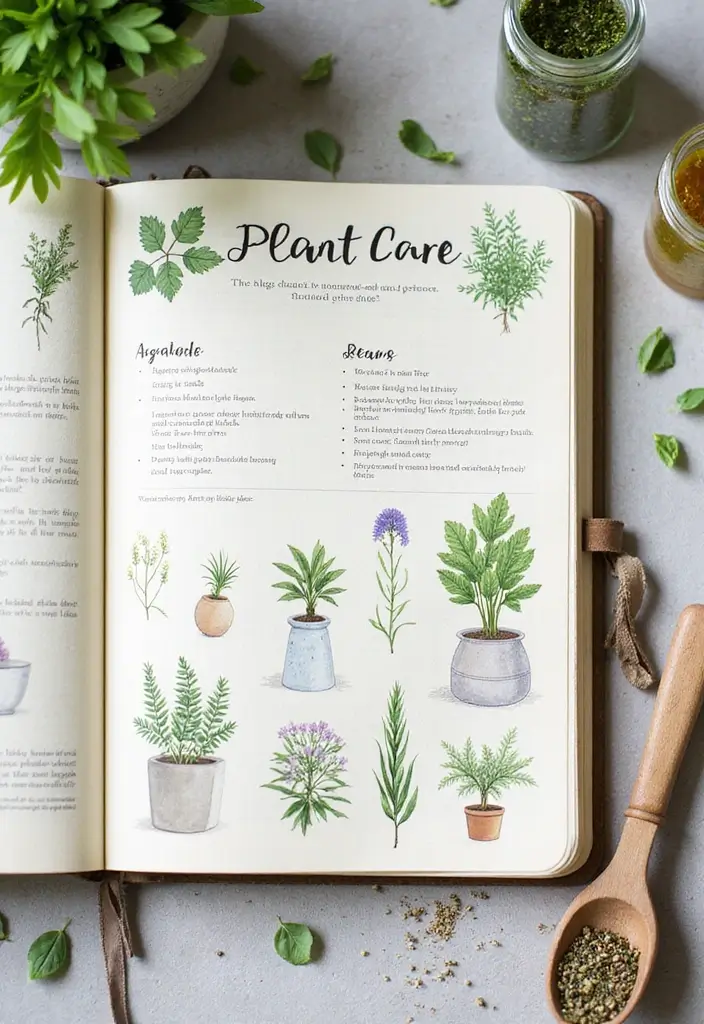
Create a section for DIY plant care recipes that you can mix up yourself!
This could include everything from homemade fertilizers to natural pest repellents. Document the ingredients, preparation methods, and results of your recipes. This not only promotes eco-friendly gardening practices but also allows you to customize care based on your plants’ needs.
– Experiment with herbal remedies for plant health.
– Share recipes with other plant enthusiasts.
– Keep track of what works best for each plant type.
Turning your journal into a recipe book can make plant care fun and educational!
Nurturing your plants can be a DIY adventure! Craft your own natural fertilizers and pest repellents—your green friends will thank you, and you’ll enjoy the journey of eco-friendly gardening.
10. Plant Swap Notes
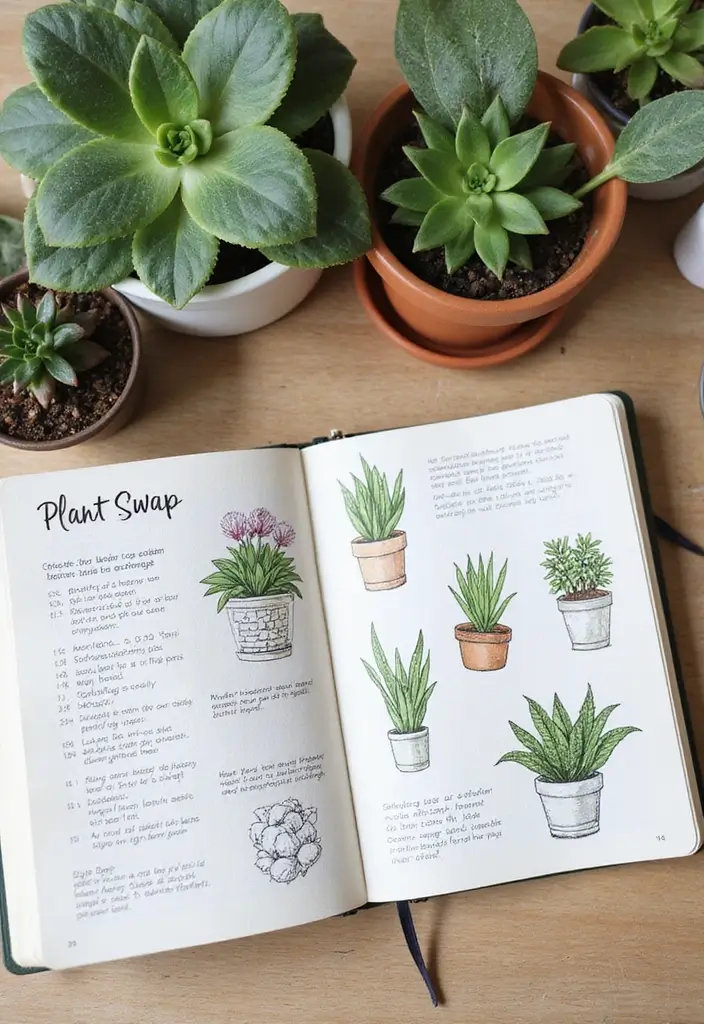
Plant swaps are a fantastic way to expand your collection while making new friends!
Use your journal to keep track of plants you acquire from swaps, including details like who you traded with, the plant’s care needs, and any special tips they shared. This can also foster a sense of community as you document the stories behind each new addition to your plant family.
– Create a ‘swap’ section in your journal.
– Note down any plant names or unique traits you learn.
– Reflect on the experiences you have during swaps.
This section will make each plant even more special as you remember their unique journey to you.
11. Plant Care Goals
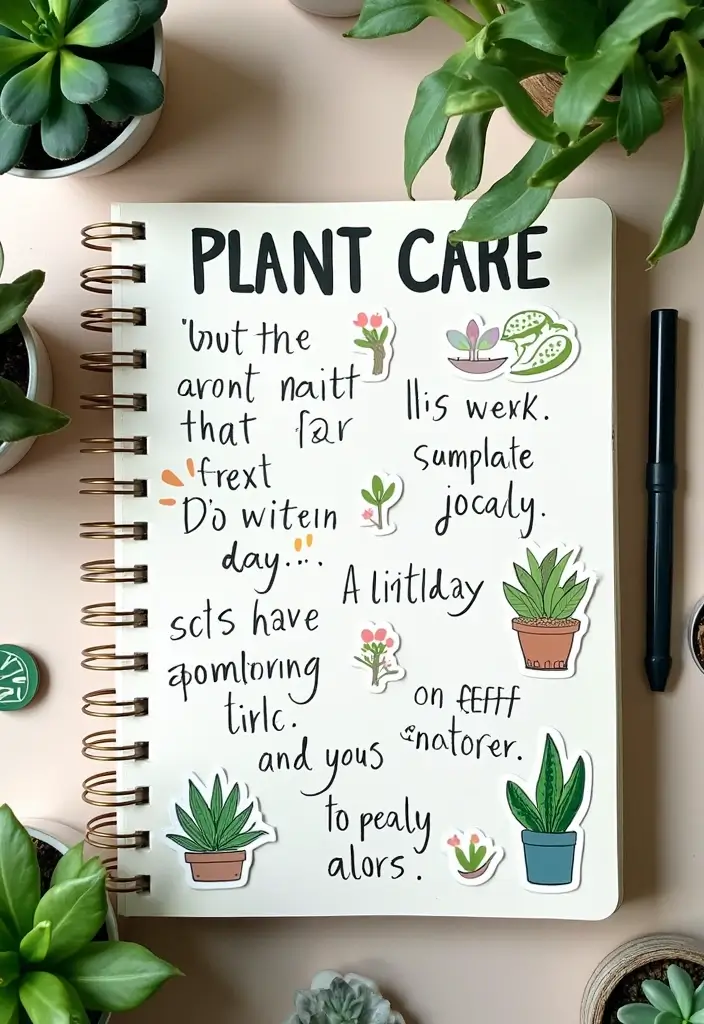
Setting plant care goals is essential for growth, both for you and your plants!
Dedicate a page to outline your short-term and long-term goals for your plant collection. This might include things like getting a new plant species, improving your watering technique, or even trying out new propagation methods. Having goals can motivate you to stay engaged and attentive to your plants’ needs.
– Set achievable milestones to track progress.
– Use inspiring quotes that resonate with your gardening journey.
– Celebrate the completion of each goal!
By mapping out your goals, you’ll create a roadmap that guides your urban gardening adventure.
12. Monthly Plant Challenges
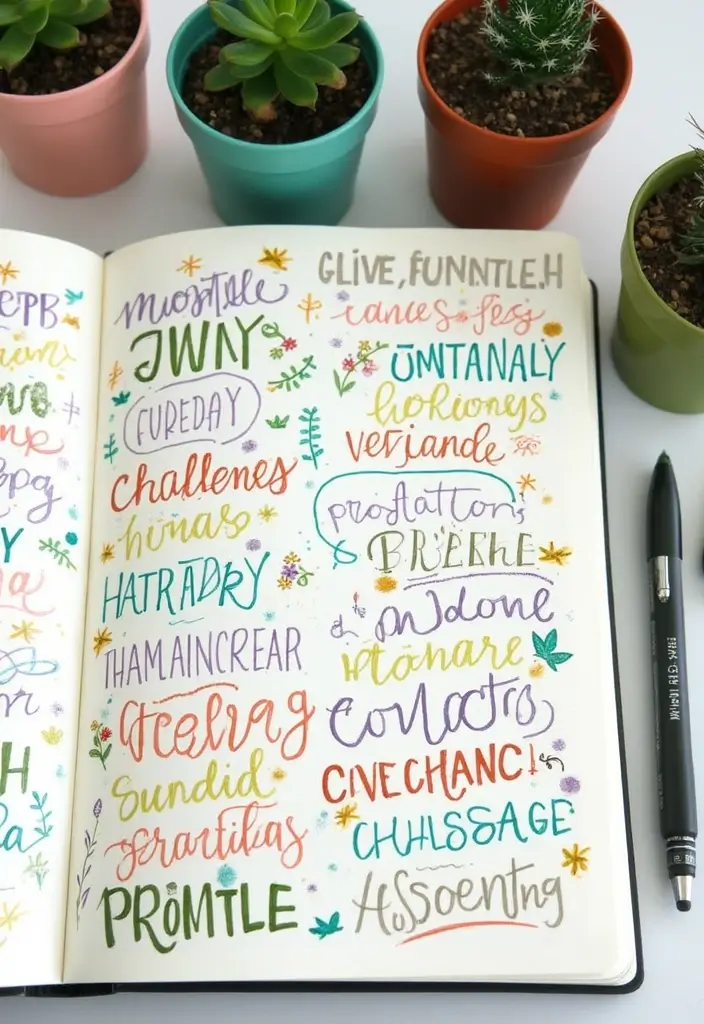
Spice up your plant journaling with monthly plant challenges!
Every month, set a new challenge for yourself, such as propagating a new type of plant, experimenting with a different soil mix, or trying a new watering routine. Document your experiences, successes, and failures, and reflect on what you learned. These challenges can keep your gardening practices fresh and exciting!
– Create a tracker to log your monthly challenges.
– Share your experiences on social media for inspiration.
– Reflect on what you’ve learned at the end of each month.
This approach makes each month feel like an adventure in your urban jungle!
13. Budgeting for Plant Care
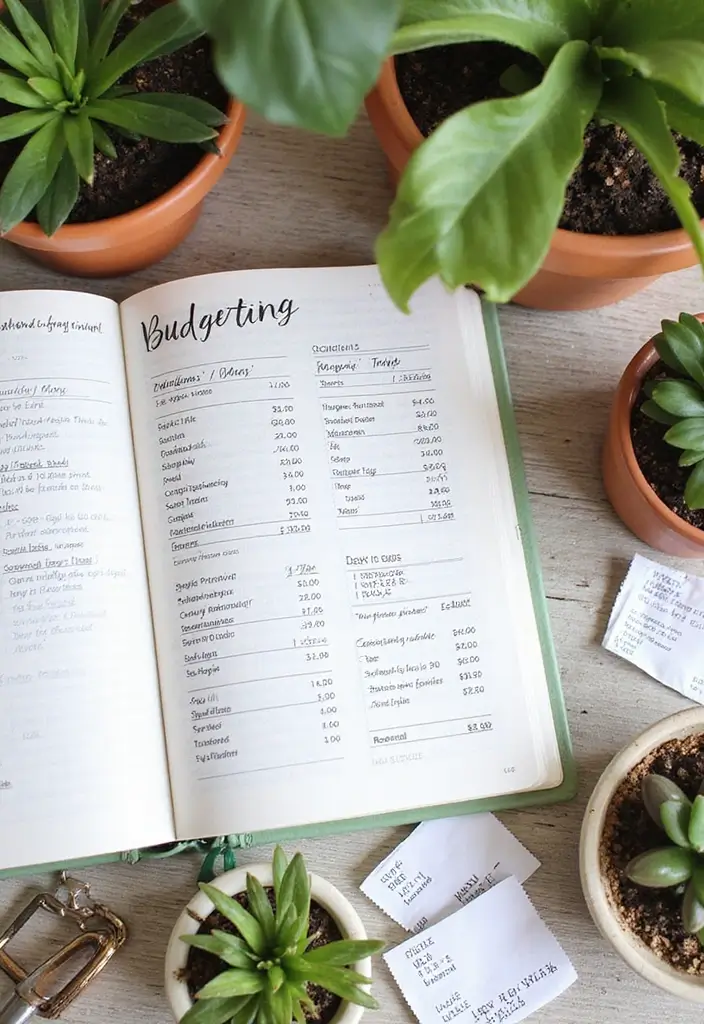
Gardening can get pricey, especially in an urban setting. Keeping a budgeting section in your journal can help manage your plant care expenses.
Track costs for potting supplies, fertilizers, equipment, and new plants. You can also note down budget-friendly tips, like DIY projects or where to find discounts. This will help you stay mindful of your spending and find cost-effective ways to nurture your green friends.
– Set a monthly budget for plant-related expenses.
– List your favorite budget-friendly gardening stores.
– Keep track of any deals or sales you find.
Managing your finances while loving your plants can empower you to make smarter choices as an urban gardener.
14. Plant-Centric Recipes

Your plant journal doesn’t have to be limited to just plant care. Why not include a section for plant-centric recipes?
If you enjoy cooking with herbs or incorporating edible flowers into your dishes, jot down your favorite recipes! Include notes on how to harvest the plants properly without damaging the main plant.
– Share personal anecdotes about trying new recipes.
– Include tips on cooking with fresh herbs.
– Document your favorite ways to use plant produce.
This section can blend your love for gardening with your culinary adventures, creating a holistic approach to plant care!
15. Plant Rescue Stories
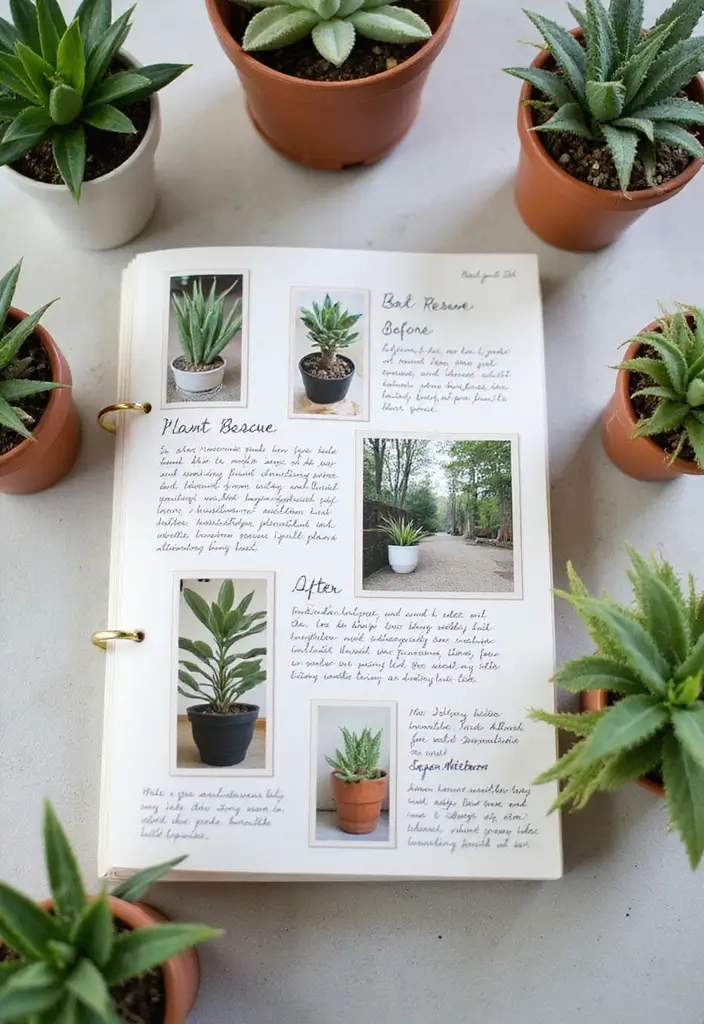
Not every plant starts off healthy; some need a little extra love. Dedicate a section of your journal to plant rescue stories!
Document your experiences rescuing plants from being discarded or neglected. Jot down their initial condition, the steps you took to rehabilitate them, and how they’re doing now. This can be incredibly motivating and shows the power of care and patience.
– Create before-and-after sections for visual inspiration.
– Note down any specific techniques used in rehabilitation.
– Share your emotional journey and connection to these plants.
Plant rescue stories carry emotional weight and can inspire others to take in and nurture struggling plants!
16. Plant Event Calendar

Stay connected to the broader plant community by creating a plant event calendar!
Mark important dates like plant fairs, workshops, and community gardening events in your journal. This helps you plan and ensures you don’t miss out on networking opportunities and learning experiences. Plus, it’s a fantastic way to immerse yourself in urban gardening culture!
– Include a list of online resources for local events.
– Set reminders for event registration deadlines.
– Document your experiences at the events you attend.
This calendar can become a vital resource and expands your knowledge while also connecting you with fellow plant lovers.
17. Propagation Experiments

Propagation is an exciting way to expand your plant family! Create a dedicated section to experiment with different propagation methods.
Document which methods work best for each plant type, whether it’s water propagation, soil propagation, or using stem cuttings. Write down your observations, successes, and failures. This can turn into a fun and educational journey of discovery!
– Track the timelines for each propagation attempt.
– Share tips on how to care for cuttings.
– Note your favorite propagation methods.
This experimentation will enhance your skills and provide a constant source of joy as you watch new plants grow!
18. Plant Mood Tracker
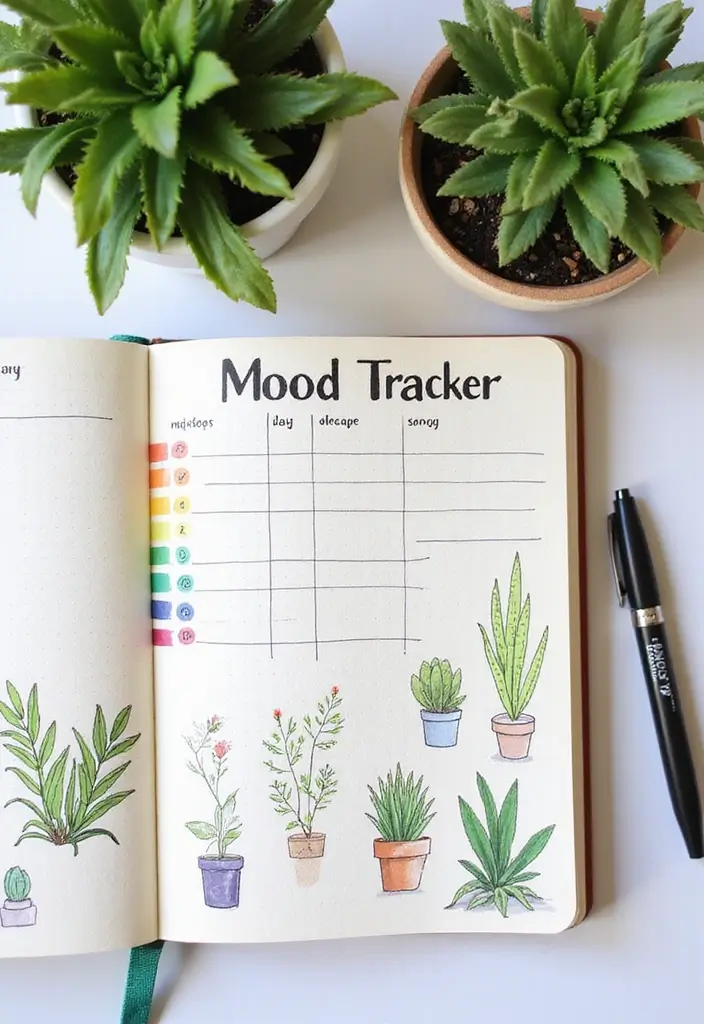
Plants are sensitive to their environments, and they can teach us a lot about our own moods as well. Create a plant mood tracker!
Each week, note how your plants are doing and how their health correlates with your mood. This can help you see patterns in how your emotional state affects your care routine and plant vitality. It’s a great reminder of the connection between mental health and nature.
– Use symbols or colors to represent different moods.
– Reflect on your observations at the end of each month.
– Make adjustments to your routine based on your findings.
This concept can create a deeper bond with your plants and enhance your overall well-being!
19. Plant Care Workshops
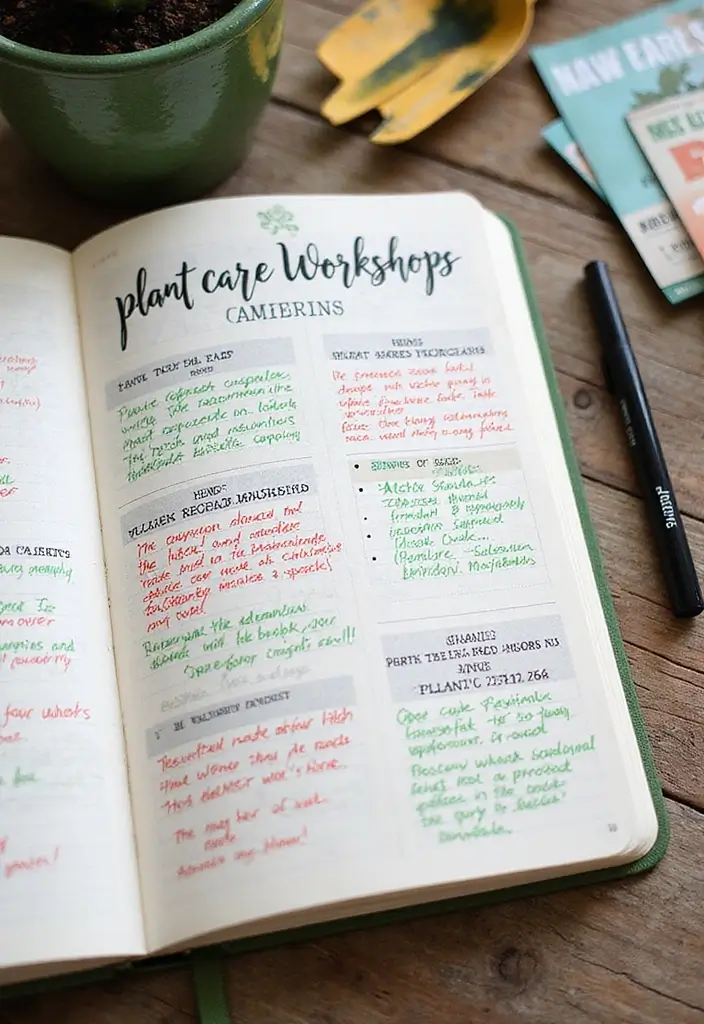
Learning is an integral part of gardening. Use your journal to plan out workshops or classes you’d like to attend or host!
Write down themes for each workshop, potential guest speakers, and what you hope to learn. This can encourage you to grow your skills and share your knowledge with others. Organizing workshops can also build a local community of plant lovers!
– Include a calendar of potential workshops in your area.
– Brainstorm topics that interest you and your friends.
– Document your learnings from each attended workshop.
These workshops can enhance your connection with the gardening community while broadening your plant care knowledge.
20. Plant Perks and Benefits

Every plant has its benefits, both for you and your environment! Dedicate a section of your journal to document these perks.
For example, note how certain plants improve air quality, boost mood, or provide culinary benefits. This can be a motivating reminder of why you love each plant and why they’re worth the care.
– List scientific studies or articles about plant benefits.
– Share personal experiences related to your plants’ perks.
– Create mini-reviews for each plant’s benefits.
This section can turn your plant journal into a source of inspiration and motivation for ongoing care!
21. Gardening Techniques & Methods
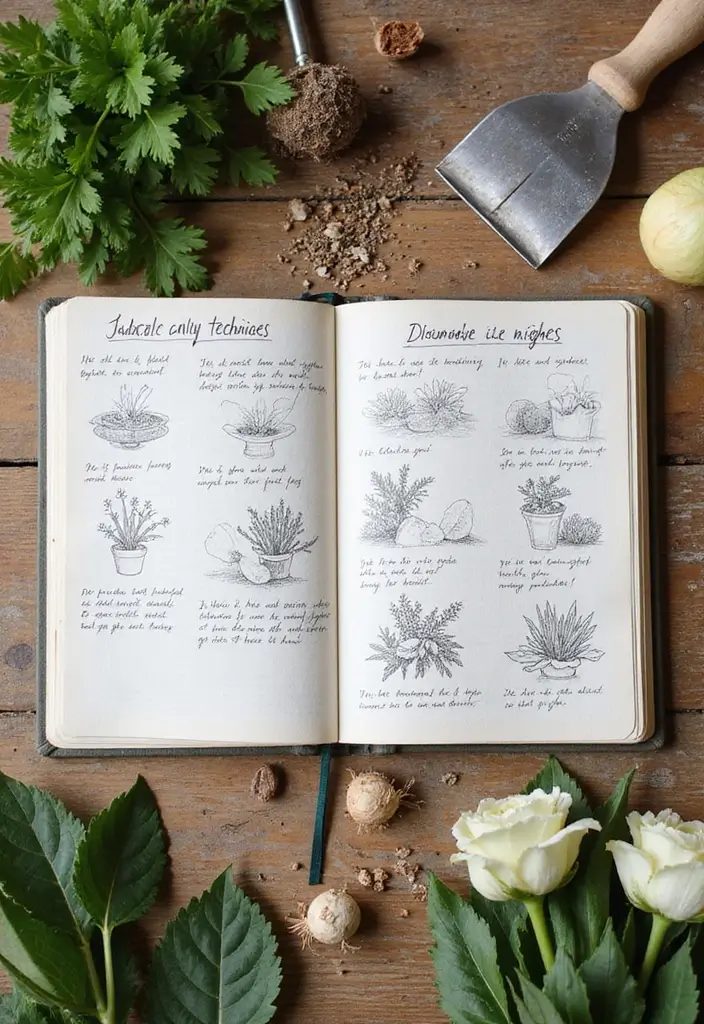
Explore and document different gardening techniques and methods within your plant journal.
This could include companion planting, hydroponics, or even organic pest control methods. Write down your experiences and results with each technique, noting what worked best in your urban setting. Documenting these methods will expand your gardening knowledge and help you become a more confident gardener.
– Include pros and cons of each technique.
– Share tips from experienced gardeners you meet.
– Create a resource list for reference.
By learning and documenting these techniques, you’ll empower yourself to experiment and grow your gardening skills!
22. Plant Photography
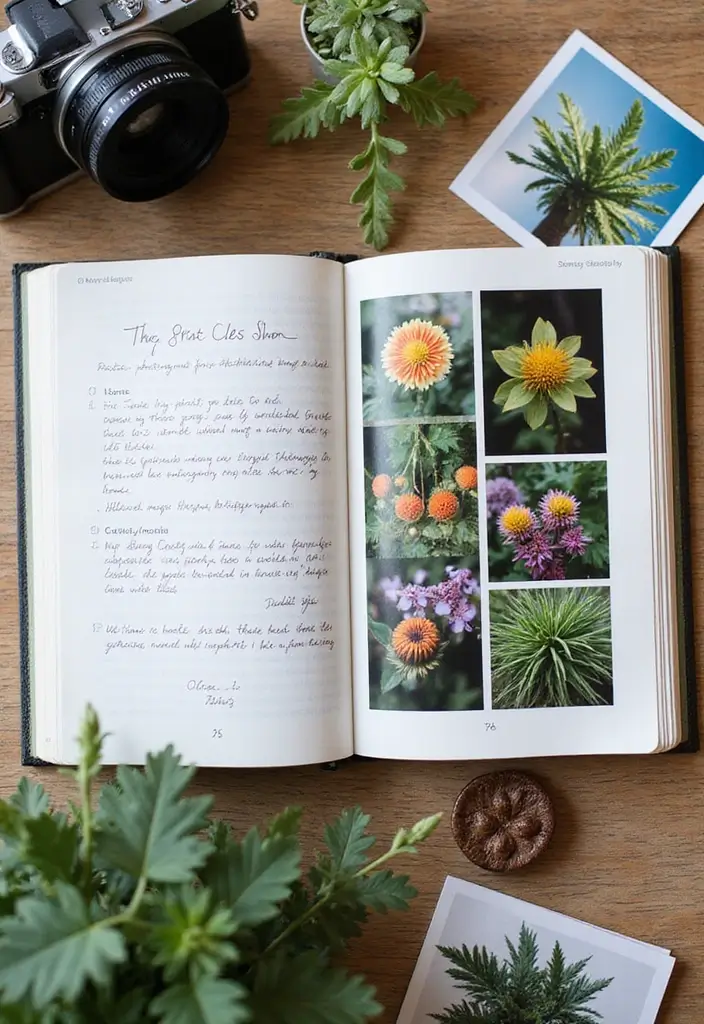
Photography can bring your plant journey to life! Dedicate a section of your journal to plant photography.
Capture moments of growth, blooming flowers, or even day-to-day care routines. Include tips on how to photograph plants, lighting, angles, and editing techniques you’ve learned along the way. This will not only enhance your journal visually but also encourage you to appreciate your plants from a different perspective.
– Experiment with different photography styles.
– Document your favorite shots and why you love them.
– Share your photos on social media to inspire others.
This photography practice can turn your journal into a stunning visual story of your plant journey!
23. Educational Resources
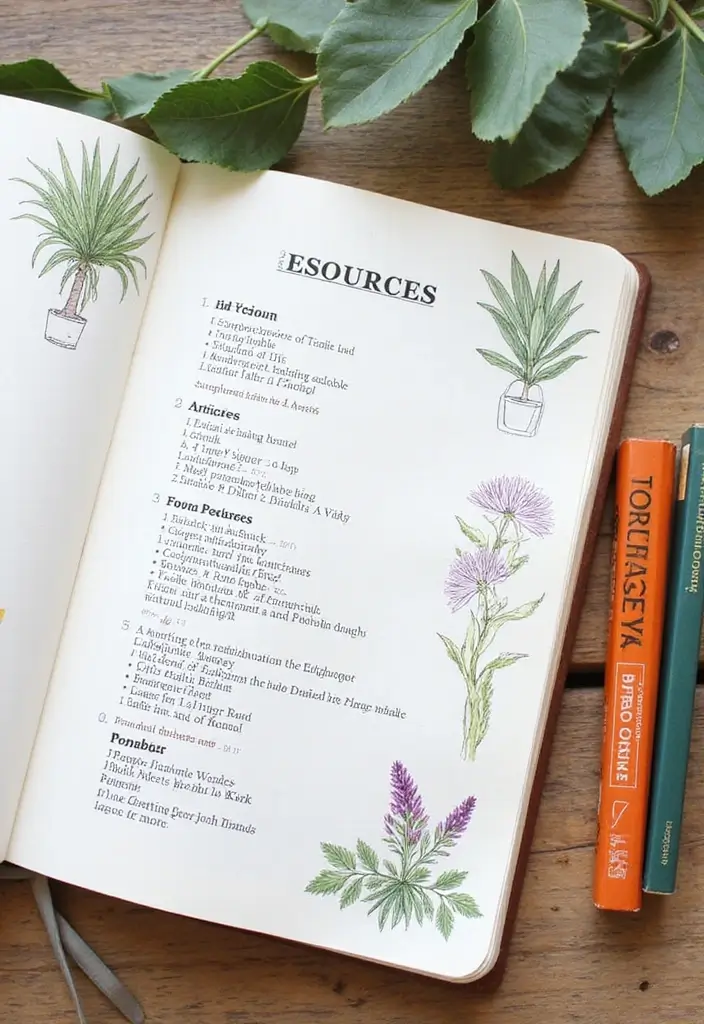
Gathering knowledge is vital for any plant lover. Use your journal to compile educational resources!
This can include books, websites, podcasts, and videos that you find helpful for improving your plant care skills. Create a list of your favorites along with summaries of what you learned from each resource. This section will serve as a handy reference when you need to refresh your knowledge or seek new information.
– Share insights from specific resources.
– Include notes on any online courses you took.
– Keep track of new discoveries in the plant care world.
Creating this educational resource library will empower you to stay informed and engaged in your gardening journey.
24. Climate Adaptation Notes
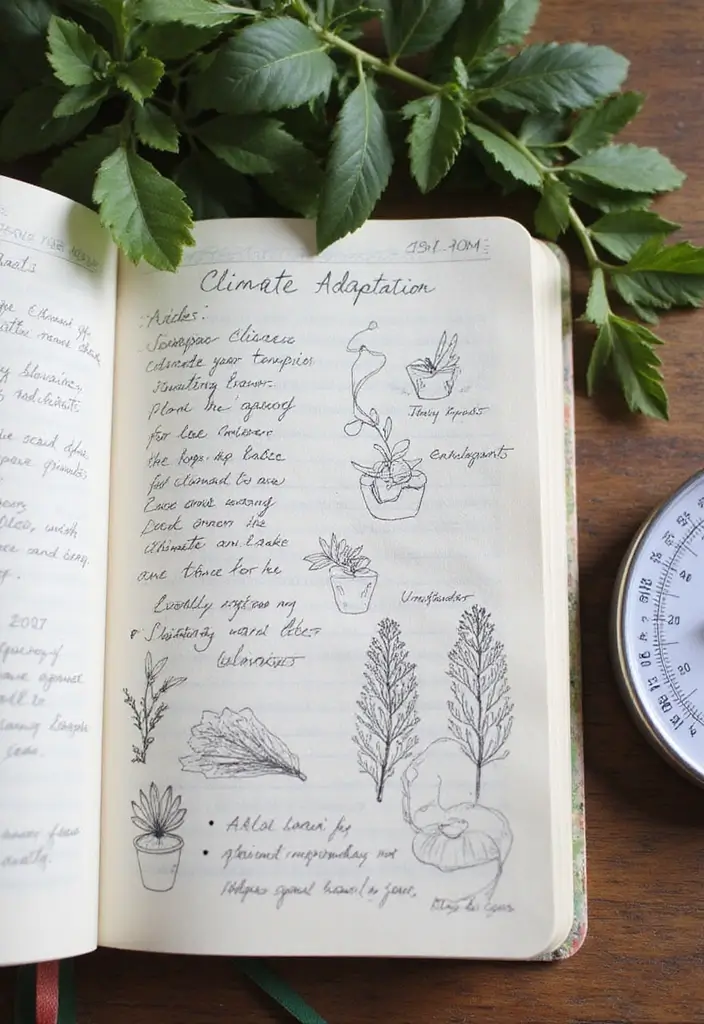
Understanding your local climate can significantly improve your indoor gardening success. Dedicate a section of your journal to climate adaptation notes for your plants!
Document the specific conditions of your urban environment, such as humidity levels, temperature fluctuations, and natural light patterns. Include tips on how you adapt your plant care routines based on these factors. This section will help you create an ideal environment for your green companions.
– Note which plants thrive in your climate.
– Share tips on adjusting care for seasonal changes.
– Include anecdotes about your plants’ reactions to different conditions.
By adapting your plant care based on climate conditions, you’ll set your plants up for success!
Understanding your climate is key to thriving plants! Document humidity, light, and temperature in your plant journal to adapt your care and watch your greenery flourish.
25. Plant Gifts & Memories

Plants often come with sentimental value, especially if they’re gifts from loved ones. Use your journal to document plant gifts and the memories associated with them!
Each entry can include stories about who gave you the plant, why it’s special, and how you care for it. Include photos or small tokens like dried flowers or cards that came with the plant. This section not only adds a personal touch to your journal but also celebrates the relationships that come with these green companions.
– Create a ‘memory lane’ for your plant gifts.
– Note down any specific care tips that were shared with you.
– Include photos of special moments with these plants.
This section will remind you of the love and connections that accompany your gardening journey!
26. Gardening Techniques Review
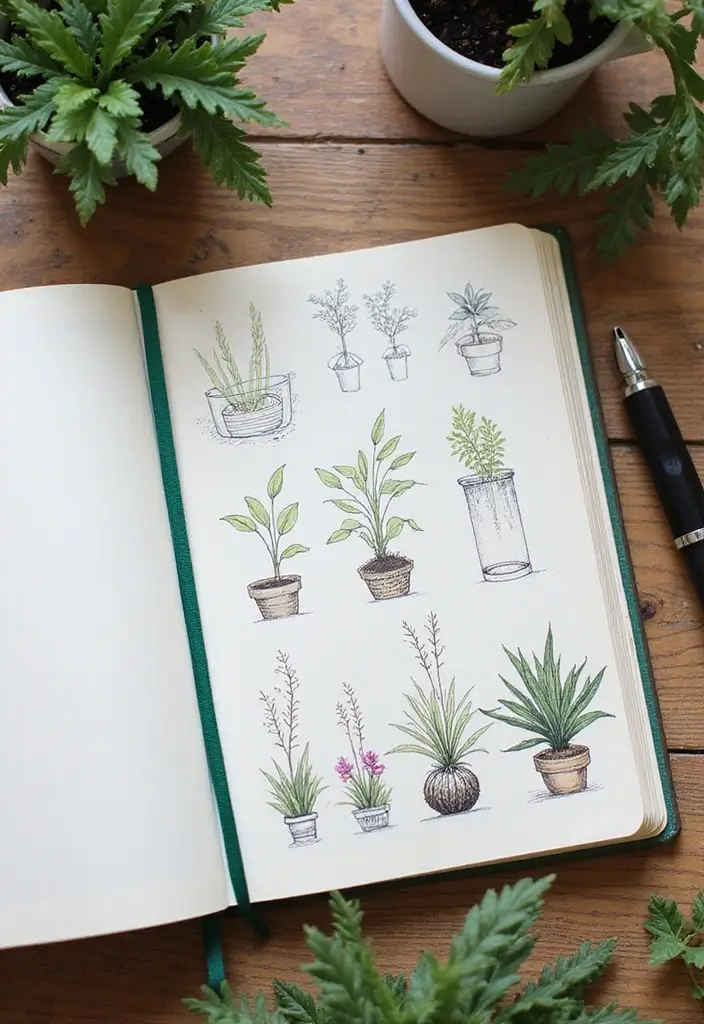
After trying different gardening techniques, it’s essential to take a step back and review what worked and what didn’t. Create a section in your journal to summarize these experiences!
Include notes on specific techniques you used, their outcomes, and ideas for improvement. This reflective practice can help you streamline your care routine and make informed decisions for future gardening endeavors.
– Assess how various techniques impacted plant health.
– Note any adjustments you’d make next time.
– Share insights with fellow gardeners for mutual learning.
This review process will make you a more thoughtful gardener, better equipped for future challenges!
27. Nature Scavenger Hunt
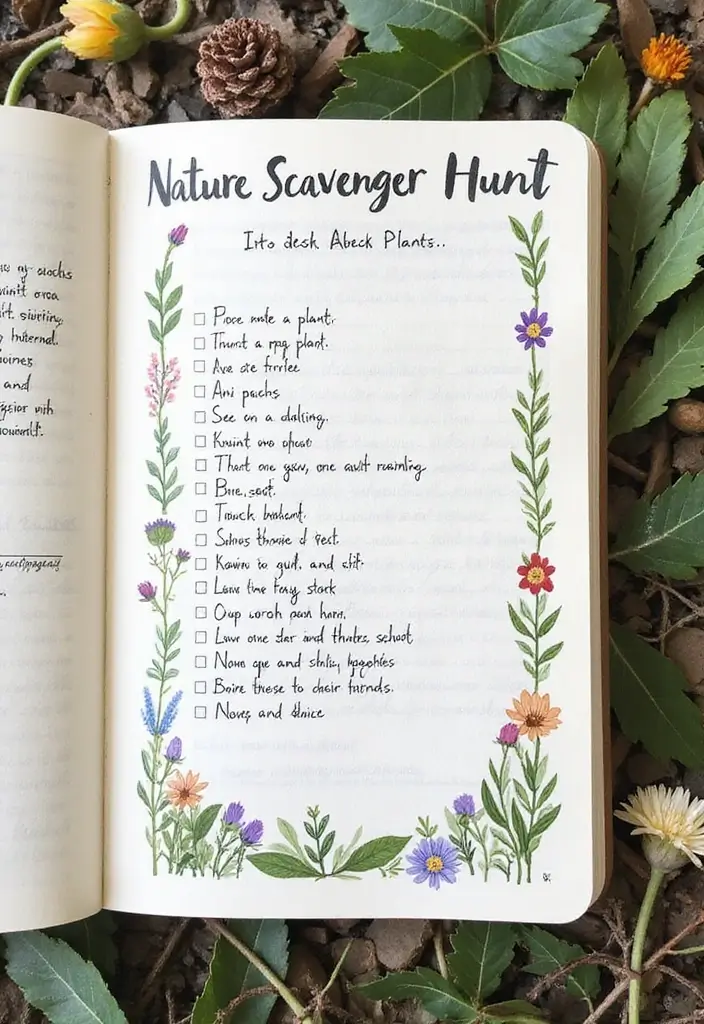
What better way to connect with nature than to embark on a nature scavenger hunt? Use your journal to document your findings!
Make a list of specific plants, flowers, and other natural elements you want to find on your scavenger hunt. As you discover them, take notes or sketch them in your journal. This activity not only enhances your observational skills but also deepens your appreciation of the natural surroundings.
– Include descriptions of different plants you find.
– Note interesting facts about each discovery.
– Challenge yourself to find rare or unique plants.
This fun and adventurous approach will keep your journal lively and engaging while connecting you with nature.
28. Urban Gardening Inspirations
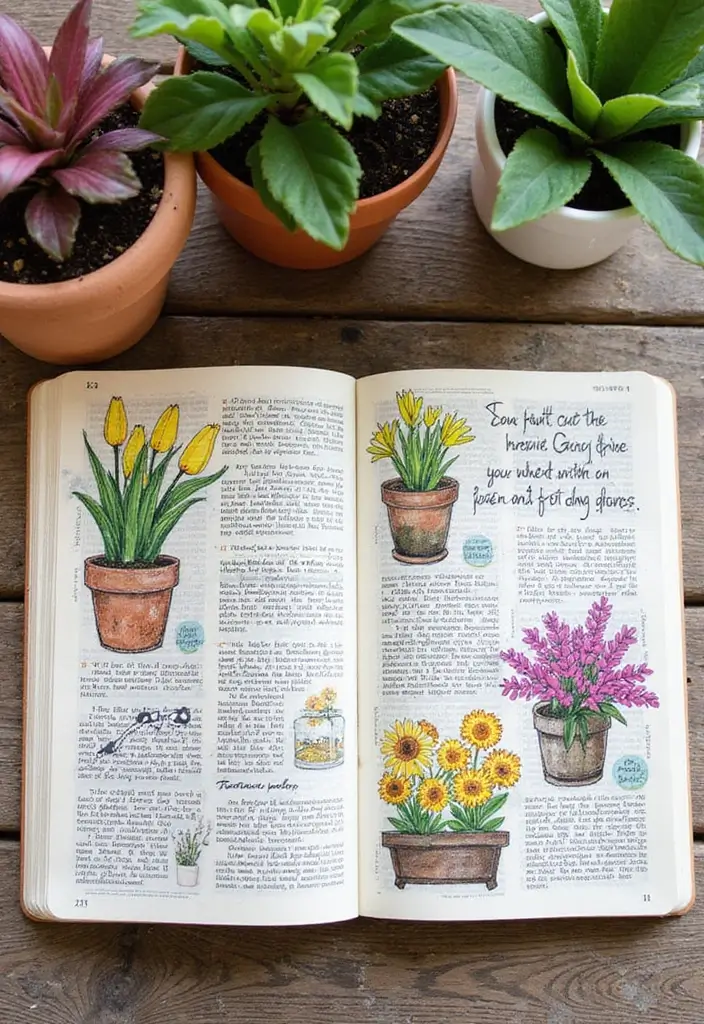
Finally, dedicate a section of your journal to urban gardening inspirations!
This can include clippings from magazines, quotes from gardening experts, or even photos of beautifully designed urban gardens. Create a visual collage that reflects your gardening style and aspirations. This will serve as a motivational reminder of what’s possible in urban spaces and ignite new ideas for your own garden.
– Create a mood board of your gardening aesthetics.
– Include tips and tricks from your favorite gardening posts.
– Document any new ideas that spark your interest.
Having this inspirational section can help fuel your passion and creativity for urban gardening, turning your journal into a source of inspiration!
In an urban jungle, creativity blooms! Use your plant journal to capture inspirations that transform small spaces into lush havens. Remember, every great garden starts with a single idea!
29. Favorite Plant Quotes

Plants have a way of inspiring us, and dedicating a section to your favorite quotes can be uplifting. Use your journal to jot down quotes that resonate with your gardening journey!
This could be from books, social media, or even your own reflections. Pair these quotes with relevant sketches or doodles to make this section visually appealing. It’s a simple yet powerful way to keep motivation at the forefront of your gardening practices.
– Use calligraphy or different handwriting styles for variety.
– Incorporate doodles or sketches that relate to each quote.
– Reflect on why each quote speaks to you personally.
By keeping a collection of inspiring quotes, you’ll have a constant source of motivation to refer back to whenever you need a little gardening boost!
30. Personal Plant Milestones
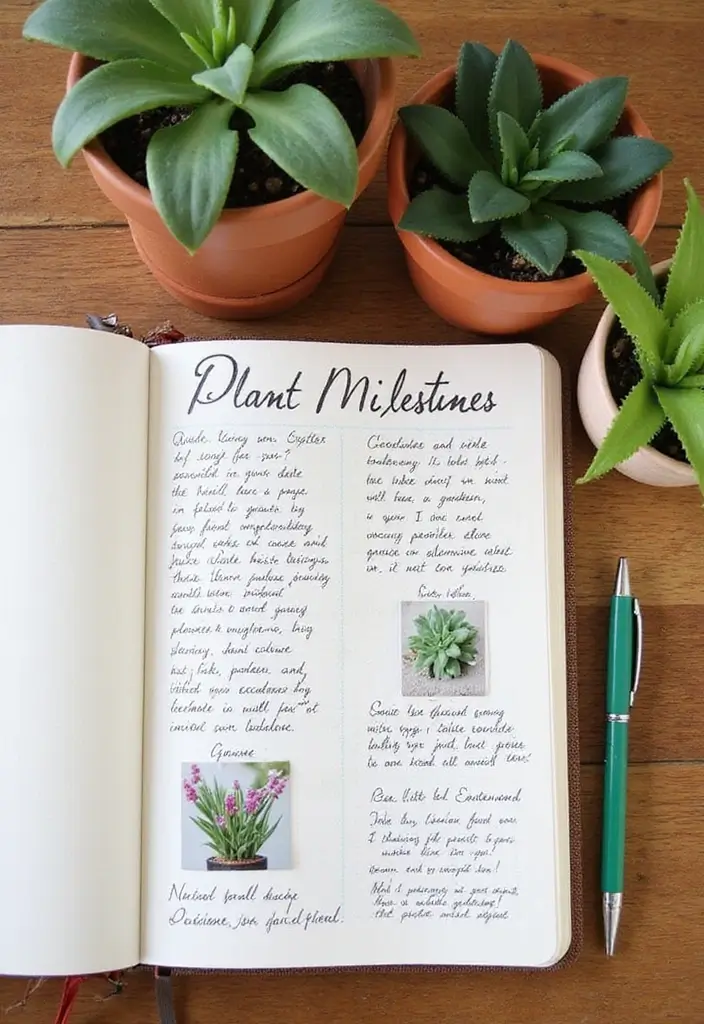
Finally, celebrate your journey as a plant parent by documenting personal milestones!
This could include anything from acquiring your first plant, propagating successfully, or even overcoming challenges. Write down what each milestone means to you and how it has shaped your gardening journey. You could even include photos to commemorate these special moments. Reflecting on your milestones can provide motivation and a reminder of how far you’ve come!
– Celebrate every small victory!
– Honor your growth as a gardener.
– Document your evolving relationship with plants.
This personal touch will make your journal a treasured keepsake of your gardening journey!
Conclusion
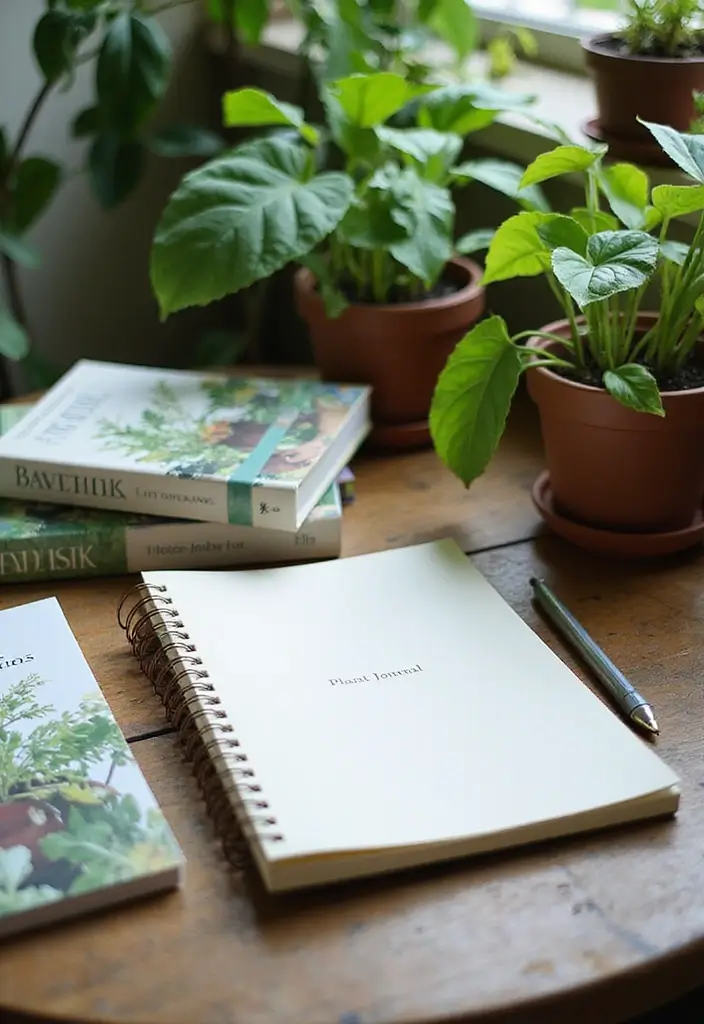
Creating a plant journal is an enriching experience that not only enhances your gardening skills but also deepens your connection with nature.
By incorporating these 30 fun ideas, you can make your plant journal a vibrant reflection of your journey as a plant lover. Each entry is a step towards becoming a more informed and caring gardener. Embrace the process, and don’t forget to share your journey with friends and fellow plant enthusiasts!
Frequently Asked Questions
What is a plant journal and why should I start one?
A plant journal is not just a notebook; it’s a personal space where you can document your journey as a plant parent!
Starting a plant journal allows you to track your plants’ growth, care routines, and challenges. It can help you become more organized and mindful about your plant care, leading to healthier plants and a deeper connection with nature. Plus, it’s a fun way to unleash your creativity with gardening journal prompts and nature journaling techniques!
What should I include in my plant journal?
Your plant journal can be as unique as your plant collection! Consider including sections for weekly plant care trackers, growth progress logs, and a plant wish list. You can also use it to jot down plant care tips, document propagation experiments, or even write plant rescue stories. The key is to personalize it to reflect your gardening journey and interests!
How can I use my plant journal for indoor gardening ideas?
Your plant journal is a fantastic tool for brainstorming and organizing indoor gardening ideas! You can sketch layouts for your spaces, list plants suitable for low light, or even create plant personality profiles to understand your plants better. This way, you can tailor your care and arrangements to fit your indoor environment perfectly, enhancing both your plants’ growth and your living space!
Can I incorporate DIY recipes in my plant journal?
Absolutely! Including a section for DIY plant care recipes in your journal can be incredibly rewarding. Document your homemade fertilizers, pest repellents, or even natural growth boosters. This not only saves you money but also allows you to control what goes into your plants’ care, making your gardening practice more organic and sustainable!
What are some creative ways to document my plant journey?
There are countless creative ways to document your plant journey! You can use plant photography to capture beautiful moments of growth, or try your hand at drawing and painting your plants using nature journaling techniques. You might also enjoy creating a plant event calendar to keep track of gardening workshops or community events. The possibilities are endless—let your imagination run wild!

